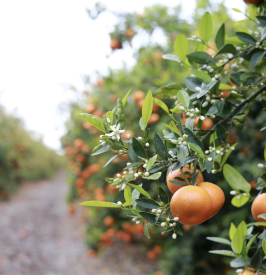American singer-songwriter Jordan Davis had a hit song featuring Luke Bryan that sat atop the Billboard country music chart for three weeks in 2021. That song, “Buy Dirt,” summed up one of the main reasons we invest in farmland.
You can buy dirt,
And thank the good Lord for it,
‘Cause He ain’t makin’ any more of it
Supply increases are pervasive throughout most real estate sectors, with new buildings and homes regularly coming online. If you’re not careful, the resulting oversupplies can create downturns that erode asset appreciation and income returns.

U.S. farmland is different because very little new farmland is ever created. In fact, U.S. farmland supply per capita has steadily declined over the years, being sold off for other real estate development and transportation networks.
This is especially true where metropolitan areas have pushed further outside city centers and exposed agricultural land to new “highest and best use” alternatives – that is, the most economically valuable use of the land.
Consider this: the United States had 2.43 arable acres for every person in the country in 1961, according to data from the World Bank. By 2018, that number had plummeted to 1.19 acres.
It’s not a phenomenon isolated to America either. Globally, farmable acres have fallen from 0.89 to 0.45 acres per person over the same period. And supply may be further constrained in the years to come due to water and weather challenges.
At the same time, demand for food continues its upward march.
Steady demand growth doesn’t typically happen in other real estate sectors, where demand is more susceptible to economic recessions and changing consumer habits. For example, it wasn’t too long ago that there were video rental stores in almost every town.
So, what makes food different? We all eat.
As Green Street Advisors explained in a 2021 primer on the U.S. farmland sector, “Demand for food, and absolute necessity compared to other types of spending, has been steady through cycles.”
And the number of mouths to feed keeps rising, particularly in less developed counties that are largely dependent on imports to meet growing caloric needs.

Increasing global wealth has also added pressure because it has allowed people’s eating habits to evolve. People from developing countries are consuming more food as their incomes improve, and they want higher-value food like meats, which all equals increased trade opportunities for U.S. farmers.
“An increase in wealth is highly correlated with increased meat consumption across developing and developed countries,” Green Street explained. “Because meat production is so resource-intensive, any incremental demand for meat has a compounding effect on demand for grains.”
Put simply, U.S. farmland is a rare investment that combines shrinking supply with growing demand. This enviable dynamic is one reason why farmland is considered a near zero-vacancy sector.
No wonder we’re buying dirt.



